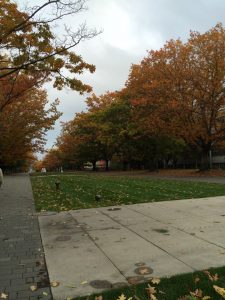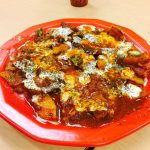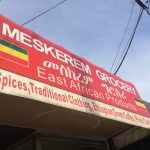Hellooooo everybody,

Now as we wrap up the 6th week with some heavy rain, we’re happy to report that much progress has been made! 🙂 We have struggled to complete our proposal, and have come up with a plan of launching the major component of the project—compiling the recipe book and asset map! In this blog, we will review our achievements, introduce the findings that we have discovered so far, and come up with future plans!
Project proposal
Weekly objectives (LFS 350 course website) and achievements
Week 2 (Sept. 14th)
Objectives
- Meet our group and set terms of reference for group work through developing a team charter
- Identify and articulate elements of professional conduct to prepare for engaging with community
- Set-up our group’s UBC Blog
Achievement
- Get to know our group members
Week 3 (Sept. 21st)
Objectives
- Contact Thea Fiddick and make an appointment with her
Achievement
- The whole group went to the Burnaby office of ISS of BC and met the manager, Thea, and she introduced the aim of the project to us. We also shared and discussed our plan for this project. (please refer to the “first impression to date” in our first blog)
- Completed our first blog posting, and successfully posted online
Week 4 (Sept. 28th)
Objectives
- Articulate the importance of a proposal in the development and implementation of a community food security project
- Complete the sections of project proposal (Introduction, Background & Significance, Methods)
Achievement
- Start preparing our proposal report; struggled but completed our first proposal draft
- Went to some retailers in Burnaby Edmonds neighbourhoods during the weekend
Week 5 (Oct. 5th)
Objectives
- Refine our proposal
- Get the proposal feedback from TA
Achievement
- Completed our proposal report, and submitted it on to the connect on time
- Had a better idea of the context, significance and method of the group project
Week 6 (Oct. 12th)
Objectives
- To make the connections between the weekly readings and the experiences that our group got during our visits to retailers
- consider how behavior, identity and action is shaped by and shapes an individual’s efforts to engage in positive change in the food system.” We went through our course’s readings and resources, trying to find the relations between them.
Achievements
- The 2nd blog posting is completed, and is successfully posted online
- The group has come up with the following plans in regards to the cooking session as well as our ultimate goal of the project —compiling a recipe book and asset map
A moment of significance that has occurred in the course so far
WHAT: In this project, we work with ISS of BC and try to help the Afghan seniors to solve the problem of accessing affordable and culturally appropriate foods. In order to achieve our goal, our group members did research online and went to Burnaby to visit those stores which sell halal foods and be advised as low-cost. We recorded the prices of various products and compared them among different stores. Although we have not done any data analysis, our first impression was that some stores indeed sold similar products as other stores but at a lower price. At that moment, we were very glad that we had found such stores that can be used in our asset map and felt that we were one step closer to solving the food insecurity problem in the Afghan senior community. However, after some careful inspection, we found that there were issues that had potential effects on the food security issue that we had not previously considered. Although there were a few stores that met the requirements of low-cost and culturally appropriate, there was a trade-off between being culturally appropriate, being of good quality, and having a low price. The quality of those cheaper products was visually much worse than those similar products with a higher price.
This situation reminds us of the research on food security in Downtown Eastside by Miewald and Aleck (2013), where people with low income and often poor housing infrastructures usually have a hard time adapting to the local food system. Those who depend on social assistance couldn’t afford to buy food that is commonly sold in grocery stores and restaurants in the neighbourhood. Instead, they have to seek everywhere for stores that sell low-price food in the Chinatown neighbourhood(Miewald and Aleck, 2013). Therefore, for those whose income level do not match the food price in the neighbourhood, they are more susceptible to food insecurity. Our findings are also consistent with the research carried out by Bradley and Herrera (2016) Food security is somewhat close related to race and culture because of the difference in accessibility to culturally-appropriate foods.
to the local food system. Those who depend on social assistance couldn’t afford to buy food that is commonly sold in grocery stores and restaurants in the neighbourhood. Instead, they have to seek everywhere for stores that sell low-price food in the Chinatown neighbourhood(Miewald and Aleck, 2013). Therefore, for those whose income level do not match the food price in the neighbourhood, they are more susceptible to food insecurity. Our findings are also consistent with the research carried out by Bradley and Herrera (2016) Food security is somewhat close related to race and culture because of the difference in accessibility to culturally-appropriate foods.
Besides the products themselves, the cleanliness and the general shopping environment in the stores were also different from each other. The stores that sold a wide range of low-cost products typically did not have as tidy a shopping environment as some of the other stores where items were sold for a higher price. For instance, the products were not stacked in order; the price tags were hard to find; and some stores had smells that we were not quite used to.
SO WHAT: The observed trade offs make our task of selecting stores for the asset map more difficult. Choosing to prioritize low cost could have the potential consequences of including foods that are not as fresh and healthful as we would like, yet focusing on the quality of the food might mean that some of those stores will not be affordable enough for the population we are trying to help. This situation adds another level of complexity to our project, because it is our goal to provide the healthiest foods for the lowest cost possible to the Afghan seniors. Having to potentially make the choice between affordable and fresh and nutritious foods is a serious reminder of the lack of food sovereignty that exists in our current food system.
NOW WHAT: We have not found the perfect solution to our dilemma, but we hope to expand our search of the stores with new focuses, as the foods that are most likely to have its quality affected are perishable foods such as fresh fruits and vegetables, so we can focus on two types of stores: stores that sell culturally appropriate, non- or semi-perishable foods such as spices, and stores that sell perishable foods at low cost, so that we can hopefully meet both our goals. At the same time, we would like to get the opinions of the Afghan seniors when we (hopefully) meet them on the 26th about their shopping habits and their opinions of the stores, as they will be the beneficiaries in the end.
We hope that by providing the Afghan immigrants the recipe book and asset map depicting resources which are affordable and culturally appropriate, we are able to at least help them to become more food secure; especially for senior Afghanistan immigrants.
Though there is no perfect solutions so far, as time passing by, the food system could undergo some fundamental changes due to emerging projects such as gardening, more social interactions as well as the advocation of food justice, through which the situation would improve a lot.
By watching Ron Finley’s TED talk “Guerilla Gardener in South Central LA,” we have learned a pleasant food system in the neighborhood can benefit the whole community. Gardening is a significant solution, which can become a tool for education and transformation of the neighborhood. Gardening also positively affects kids’ eating habits. Kids will know the joy and pride in growing their own food, which makes them more likely to eat the foods that were grown by themselves (2013).
From the reading by Miewald and Aleck (2013), we learned that social interactions have the potential to make positive contributions to food security. Specific example for this is how residents in the Downtown Eastside community have a chance to have their own gardens and are able to cook their food in communal kitchens (Miewald and Aleck, 2013). This is a good example of wise resource management and how personal behaviors make positive changes to the community food security; when everybody have access to high standard kitchen infrastructures.
Right now, disadvantaged groups (race, gender, age, etc.) are also getting steps ahead standing up for themselves, escaping the food system which has long been colonized by dominant groups. Right now scholars are open to voices expressed by minorities and working hard to decolonize the food system (Bradley and Herrera, 2016).
Bradley and Herrera (2016) also mentioned that over the past years, activists have become increasingly more aware of morality that relates to food justice. Morality means one should consider the effect of his behavior on environment as well as marginalized people, otherwise the goals of food justice could not be met because the benefits and sufferings are not shared equally between individuals with diverse backgrounds. The more awareness of food justice exists in people, the higher the likelihood of positive changes happening. This shows how our actions and behaviors not only affecting our environment but also affecting the others.
Upcoming objectives and strategies to achieve them
Meet the seniors (hopefully on Oct.26th), cooking session (hopefully on Nov.16th)
- Coordinate the best and most convenient time for the group and the seniors
- Confirm time with Thea
- Book kitchen
- Decide on the recipes to make
- Make grocery list
- Buy groceries one day ahead
- Hopefully have a first of draft for the asset map and recipe book by the 26th!!!
We are hoping to meet with the seniors on Oct. 26th to know each other more and to coordinate the cooking session which is planned to be held on Nov. 16th. These dates may change in the future as we are in the middle of coordinating the best and most convenient time for both our group and the seniors.
Once we have decided on the times and dates, we will meet with the seniors and plan for the cooking session; what food should we cook and what ingredients do we need. We will make a grocery list as a reminder and buy the groceries one day before the cooking session to maintain the freshness of the ingredients.
Another objective is making a draft for the recipe book and the asset map by Oct. 26th. Thea-Lynne Fiddick, the manager for ISS of BC settlement program and also our coordinator, wishes to see the draft and give us some pointers to make the resource guideline be as effective and interactive as possible.
To sum it up, here is our to-do list:
- Decide on the times and dates to do the meeting and the cooking session
- Book the kitchen
- Decide on what food to cook
- Make a grocery list
- Buy the groceries one day ahead
- Make the resource guide draft
Reference
Ron Finley. (2013, February). Guerilla Gardener in South Central LA. TED Talk. Podcast retrieved from https://www.ted.com/talks/ron_finley_a_guerilla_gardener_in_south_central_la?language=en
Miewald, C., & Ostry, A. (2014). A warm meal and a bed: Intersections of housing and food security in vancouver’s downtown eastside. Housing Studies, 29(6), 709-729. doi:10.1080/02673037.2014.920769
Bradley, K., & Herrera, H. (2016). Decolonizing food justice: Naming, resisting, and researching colonizing forces in the movement: Decolonizing food justice. Antipode, 48(1), 97-114. doi:10.1111/anti.12165


